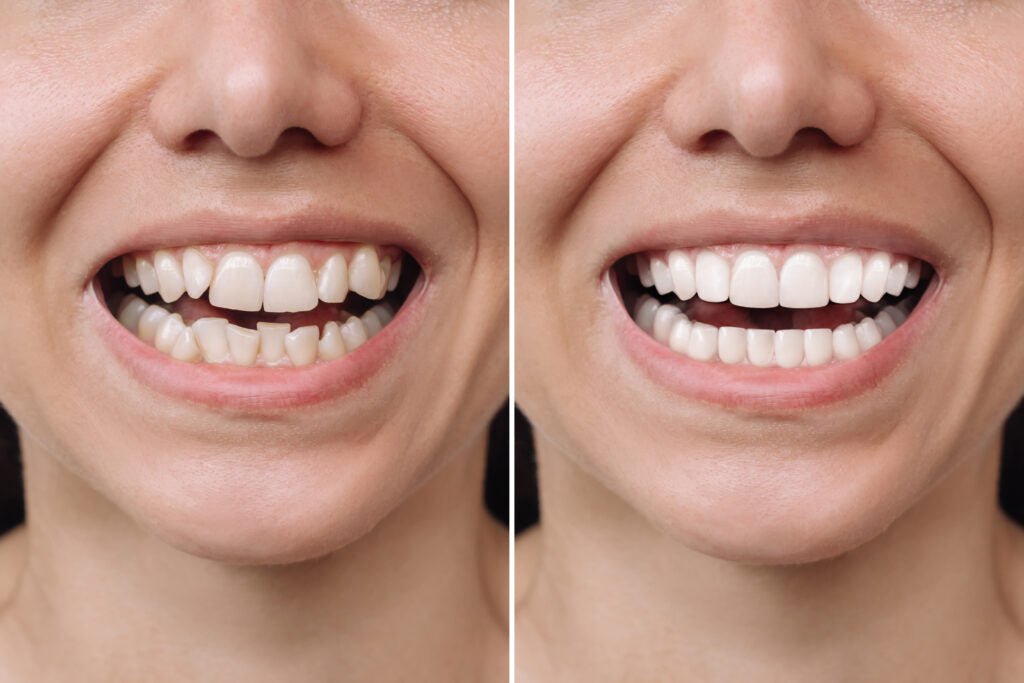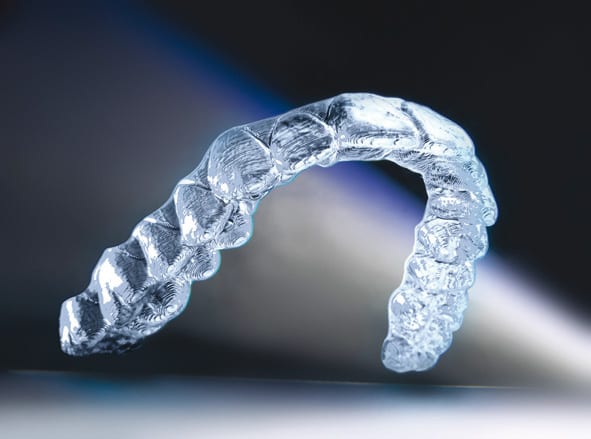Dental crowding occurs when there is insufficient space in the mouth for permanent teeth to erupt correctly, resulting in overlapping, twisted, or misaligned teeth. As a common form of malocclusion, crowding can affect a single tooth or multiple teeth across both dental arches. Left untreated, it can lead to oral hygiene challenges, aesthetic concerns, and long-term health complications. This comprehensive guide explores the symptoms, underlying causes, and treatment options available through professional orthodontic care.
Table of contents
What Is Dental Crowding?
Understanding Tooth Crowding
Dental crowding refers to the misalignment of teeth caused by a lack of adequate space in the jaw. As permanent teeth compete for room, they may erupt at improper angles or in overlapping positions. This condition can lead to functional issues such as difficulty cleaning the teeth, speech changes, bite irregularities, and aesthetic concerns that affect a patient’s confidence.
Common traits of dental crowding include:
Twisted or overlapping teeth
Teeth erupting at abnormal angles
Misaligned bite or improper contact between teeth
Increased plaque buildup and difficulty flossing
The Cause of Dental Crowding
What is considered severe crowding?
Severe crowding occurs when the size and number of teeth significantly exceed the available space in the jaw. This can be due to overly large teeth, the presence of extra teeth, or delayed exfoliation of primary teeth. Such cases often involve multiple teeth overlapping or growing at extreme angles, requiring complex orthodontic treatment to correct.

Why are my teeth becoming more crowded?
Dental crowding can result from a combination of hereditary, developmental, and behavioral factors. Genetics play a significant role in determining jaw size and tooth shape, while external factors—such as early loss of baby teeth, thumb-sucking habits, or extended pacifier use—can interfere with proper dental development. In some cases, permanent teeth erupt before the jaw has completed its growth, resulting in spacing issues.

Factors Behind Dental Crowding
In its early stages, dental crowding may go unnoticed, particularly if misalignment is minor. Over time, however, crowding becomes more evident through cosmetic irregularities, discomfort while chewing, or bite problems. Diagnosing the condition early allows for timely intervention and may prevent the need for more invasive treatment.
What do overcrowded teeth feel like?
Patients with dental crowding may experience a range of symptoms, including difficulty biting or chewing, soreness in the jaw, and noticeable pressure between adjacent teeth. Some may also report trouble flossing or a feeling of tightness along the dental arch, especially when permanent teeth begin to erupt.
What do orthodontists do for overcrowding?
When symptoms such as overlapping teeth or jaw discomfort arise, a consultation with a licensed orthodontist is recommended. These specialists can diagnose the severity of crowding, determine its cause, and outline a personalized treatment strategy to restore proper alignment and function.

Dangers of Crowded Teeth
Factors Affecting Oral Hygiene
Crowded teeth create tight spaces that are difficult to clean effectively, making them more susceptible to plaque accumulation and tartar buildup. Even with consistent brushing and flossing, food particles and bacteria can remain trapped, leading to cavities and gum inflammation.
Health Implications with Prolonged Poor Oral Hygiene
If left untreated, crowded teeth can cause a cascade of oral health issues, including chronic bad breath, gum disease, and enamel erosion. In severe cases, dental crowding can contribute to temporomandibular joint dysfunction (TMD), speech difficulties, and lowered self-esteem due to the appearance of one’s smile.
Best Treatment for Overcrowded Teeth
How do dentists fix crowded teeth?
Orthodontists use a range of tools to treat dental crowding, from traditional braces to modern aligner systems. These treatments work by applying gradual, controlled pressure to shift teeth into their correct positions. Depending on the case, additional appliances such as expanders or retainers may be used to enhance results.
The treatment plan for dental crowding is based on a comprehensive evaluation of the patient’s oral health, age, and the degree of misalignment. Braces—whether metal or ceramic—remain a reliable solution for many, while Invisalign offers a less visible alternative for patients seeking aesthetic discretion during treatment.
Best Treatment Options for Crowded Teeth
Diagnosing Crowded Teeth
A diagnosis begins with a clinical exam and often includes panoramic X-rays, digital scans, and bite analysis. These diagnostics enable the orthodontist to determine the extent of crowding and design a treatment plan tailored to the patient's unique needs, goals, and financial considerations.
Key diagnostic steps include:
Visual inspection of dental arches
Panoramic or 3D imaging for jaw assessment
Impressions or scans for custom appliance design
Evaluation of bite function and jaw alignment
Review of patient history and aesthetic concerns
What happens if you don't fix crowding teeth?
Choosing not to address dental crowding can lead to persistent oral health issues, including gum disease, tooth decay, and jaw strain. Misaligned teeth are more likely to experience abnormal wear, and crowded bites may result in long-term damage to supporting bone and soft tissue structures.
Aligning Overlapped Teeth
Orthodontic treatment begins with a detailed evaluation, followed by the selection and placement of corrective appliances. Patients undergo regular follow-ups to adjust their appliances and monitor progress. Treatment duration generally ranges from 12 to 30 months and varies based on the severity of the crowding.
Typical steps in treatment include:
Diagnostic scans and intraoral photographs
Placement of braces or delivery of aligners
Periodic adjustments or aligner changes every few weeks
Use of elastics, expanders, or other appliances as needed
Reversing Teeth Crowding
Although the active phase of treatment repositions the teeth, long-term results depend heavily on retention. Once the teeth have been aligned, patients must wear retainers to maintain the new position. Without this step, there is a significant risk of relapse.
How long is treatment for crowded teeth?
Treatment length depends on individual factors such as the severity of the crowding and the patient’s response to orthodontic intervention. After braces or Invisalign, retainers are worn nightly—or as directed—to ensure the teeth remain properly aligned during the post-treatment phase.
Tips for long-term smile maintenance:
Wear your retainers nightly (or as directed by your orthodontist)
Avoid biting into hard or sticky foods that could damage the retainer
Continue routine dental checkups and cleanings
Contact your orthodontist if the retainer feels loose or uncomfortable
How to manage crowded teeth?
Long-term management of dental crowding involves consistent retainer use, regular dental visits, and healthy oral habits. Retention prevents teeth from shifting back into misaligned positions and protects the results achieved through orthodontic care.
Key reasons to follow your retention plan:
Preserves the alignment and bite corrections achieved
Reduces the risk of needing retreatment
Protects the investment of time and cost in orthodontic care
Supports long-term oral and periodontal health
Can overcrowding teeth be fixed?
Yes, overcrowded teeth can absolutely be corrected. Orthodontists commonly treat this condition using braces or clear aligners like Invisalign. Depending on the severity, a personalized plan is created to gradually reposition the teeth. Whether it involves minor adjustments or more complex alignment, in-office treatment by a licensed orthodontist can effectively resolve dental crowding.
At what age is it too late to straighten teeth?
There is no age limit for orthodontic treatment. While younger patients may see faster results due to more flexible bone structures, adults can also achieve excellent outcomes with braces or aligners. The process may take a bit longer, but tooth movement remains possible throughout life, making it never too late to pursue a straighter smile.
Does tooth crowding get worse with age?
Yes, dental crowding often progresses over time. Natural changes in the mouth—such as jawbone remodeling or late tooth shifting—can cause teeth to become more misaligned with age. Even patients who’ve had braces before may notice a gradual relapse if retention practices aren’t maintained.
Which doctor corrects teeth misalignment?
Orthodontists are the specialists who diagnose and treat bite and alignment issues. They’re trained to correct crooked, spaced, or twisted teeth using tools like metal braces, ceramic braces, clear aligners, and retainers. If you're experiencing misalignment, an orthodontist can develop a custom plan based on your specific needs.
Can I live with crowded teeth?
While many people manage to live with crowded teeth, it's important to understand the potential downsides. Overlapping teeth can be harder to clean, increasing the risk of cavities and gum disease. Additionally, crowding may lead to bite discomfort or cosmetic concerns over time. Addressing the issue early can improve both oral health and confidence.
Conclusion
Dental crowding is more than a cosmetic issue—it’s a condition that can compromise oral hygiene, disrupt proper bite function, and negatively impact self-esteem. Through early diagnosis, personalized treatment, and diligent follow-up care, patients can achieve long-lasting improvements in both health and appearance. Whether using braces, aligners, or a combination of techniques, effective orthodontic care transforms not just smiles—but lives.






